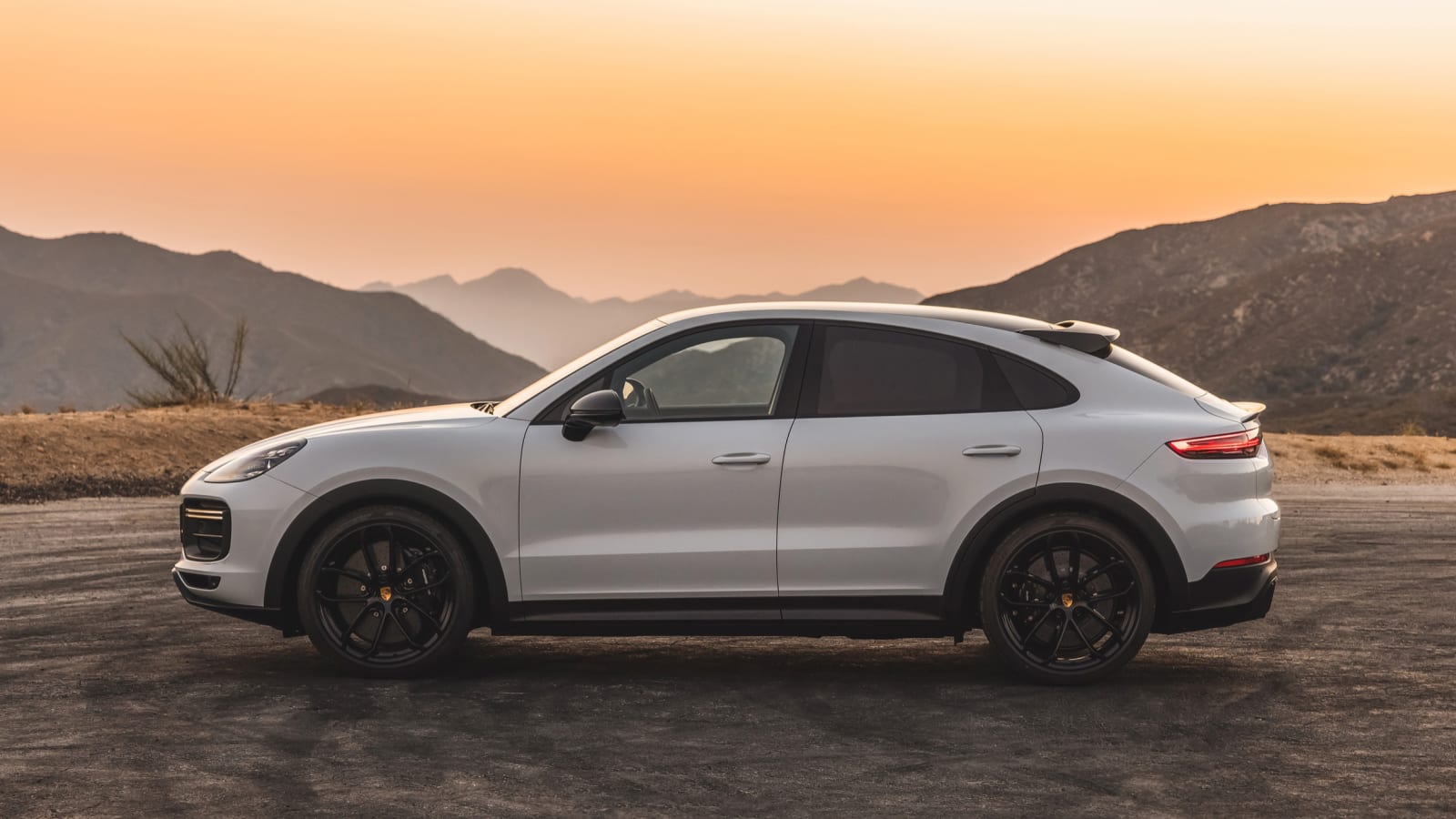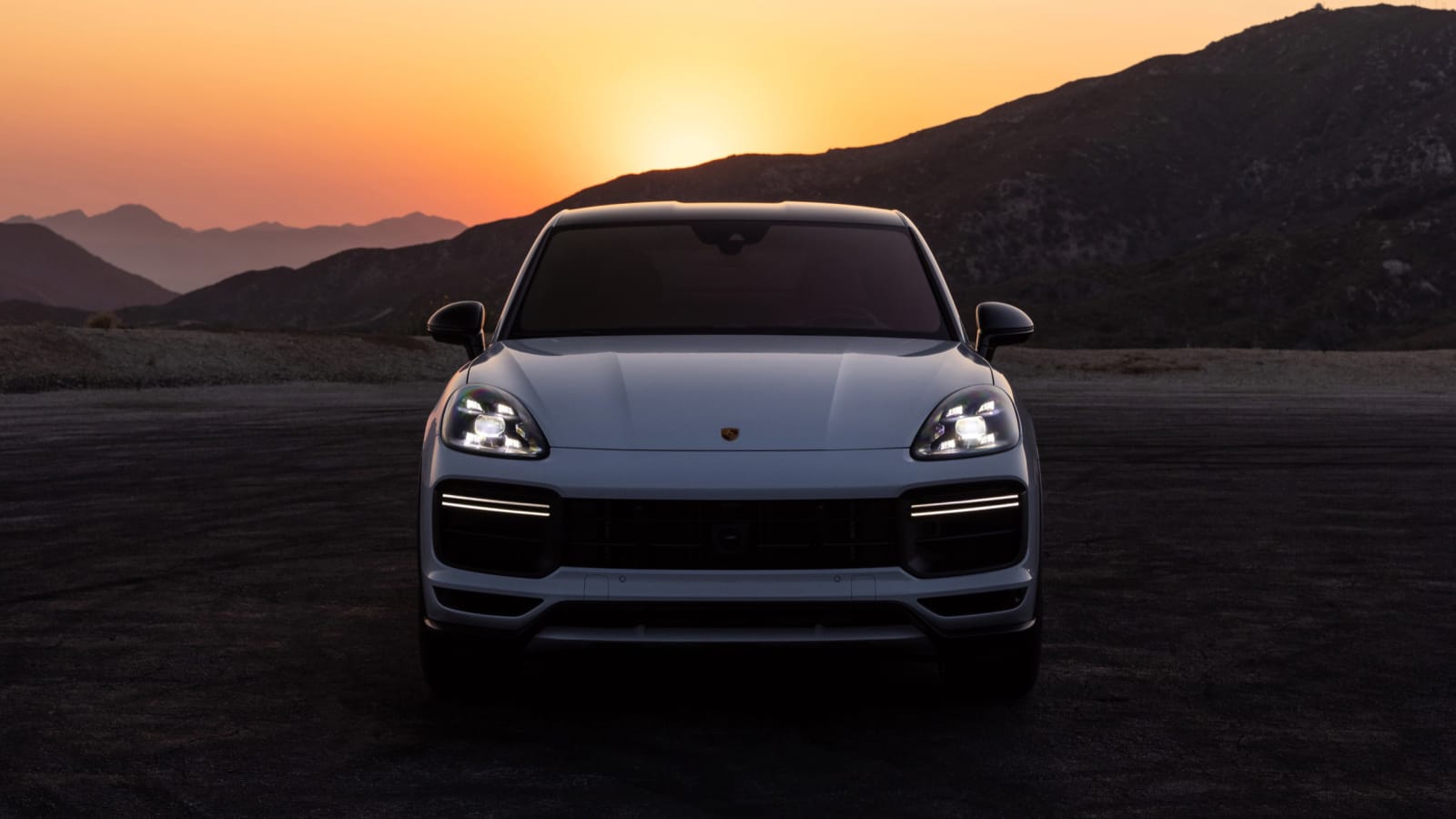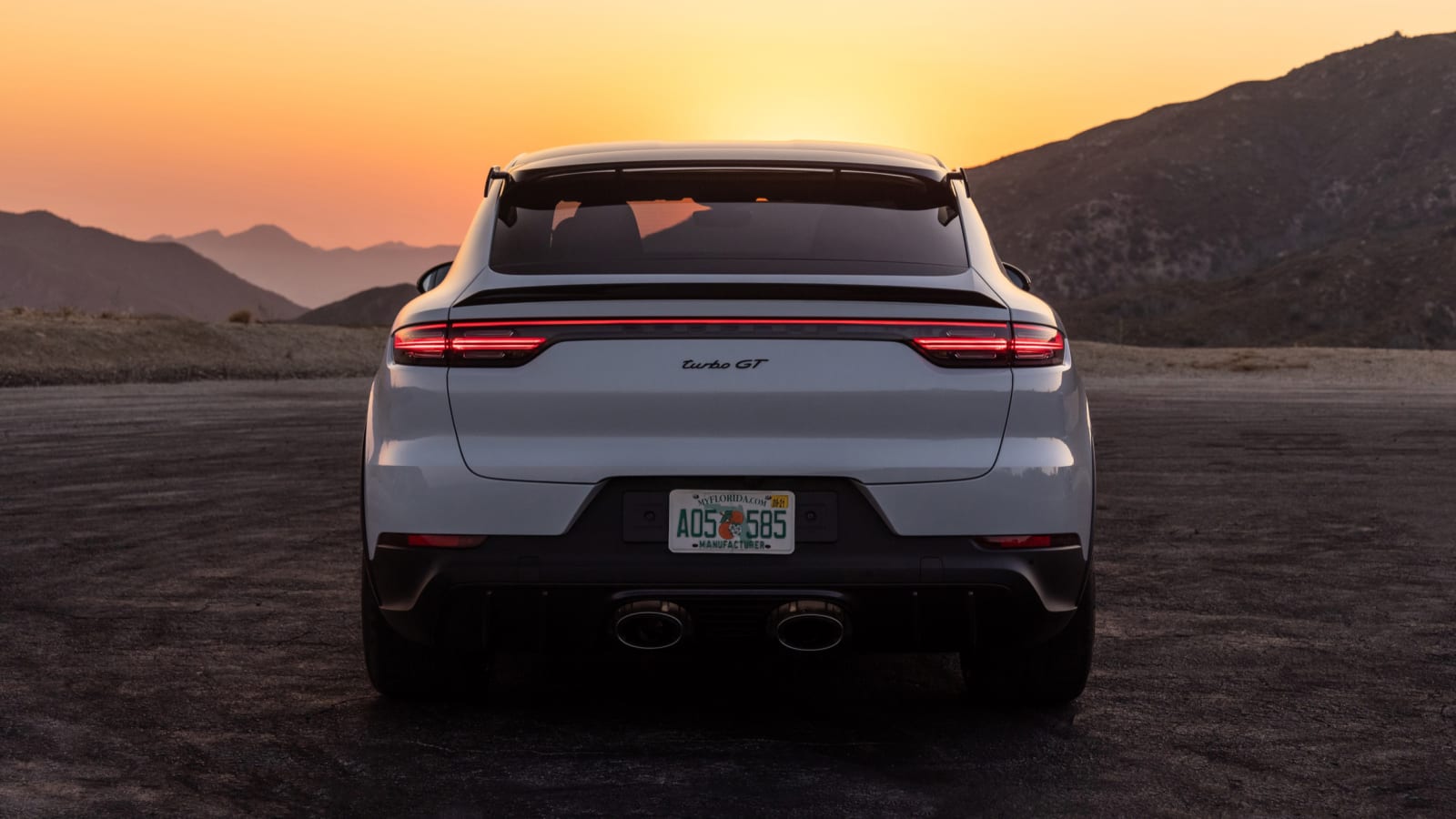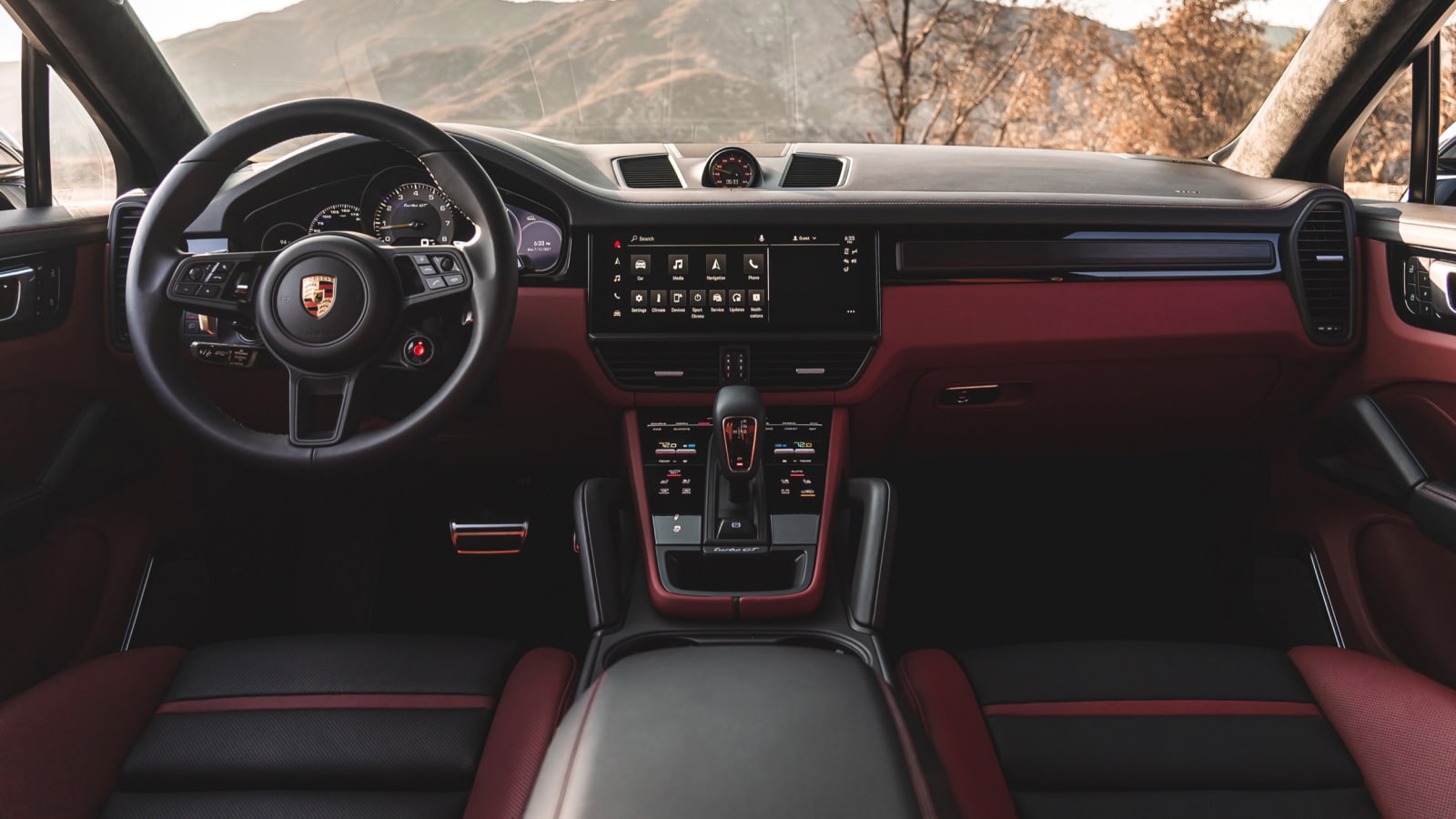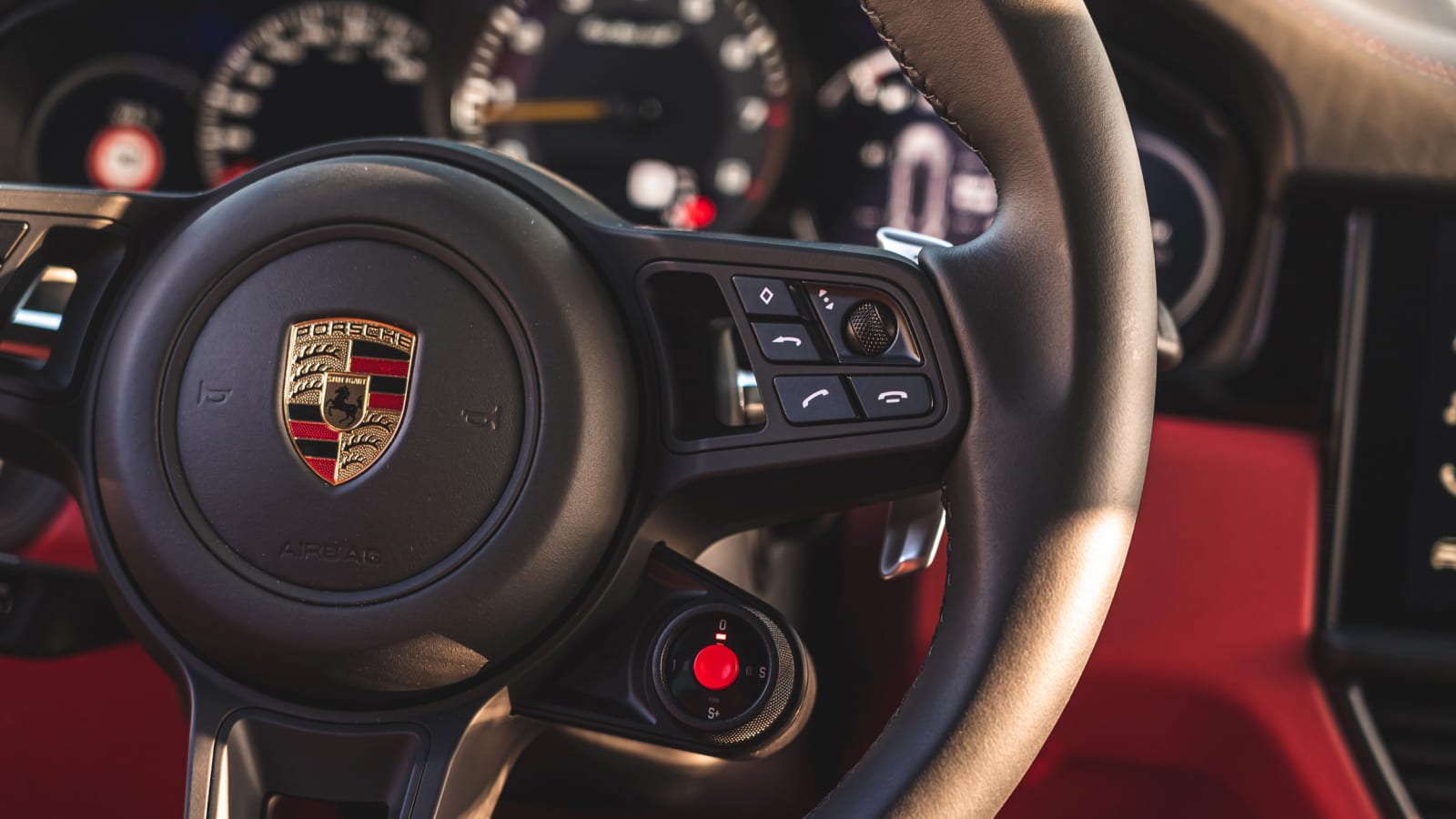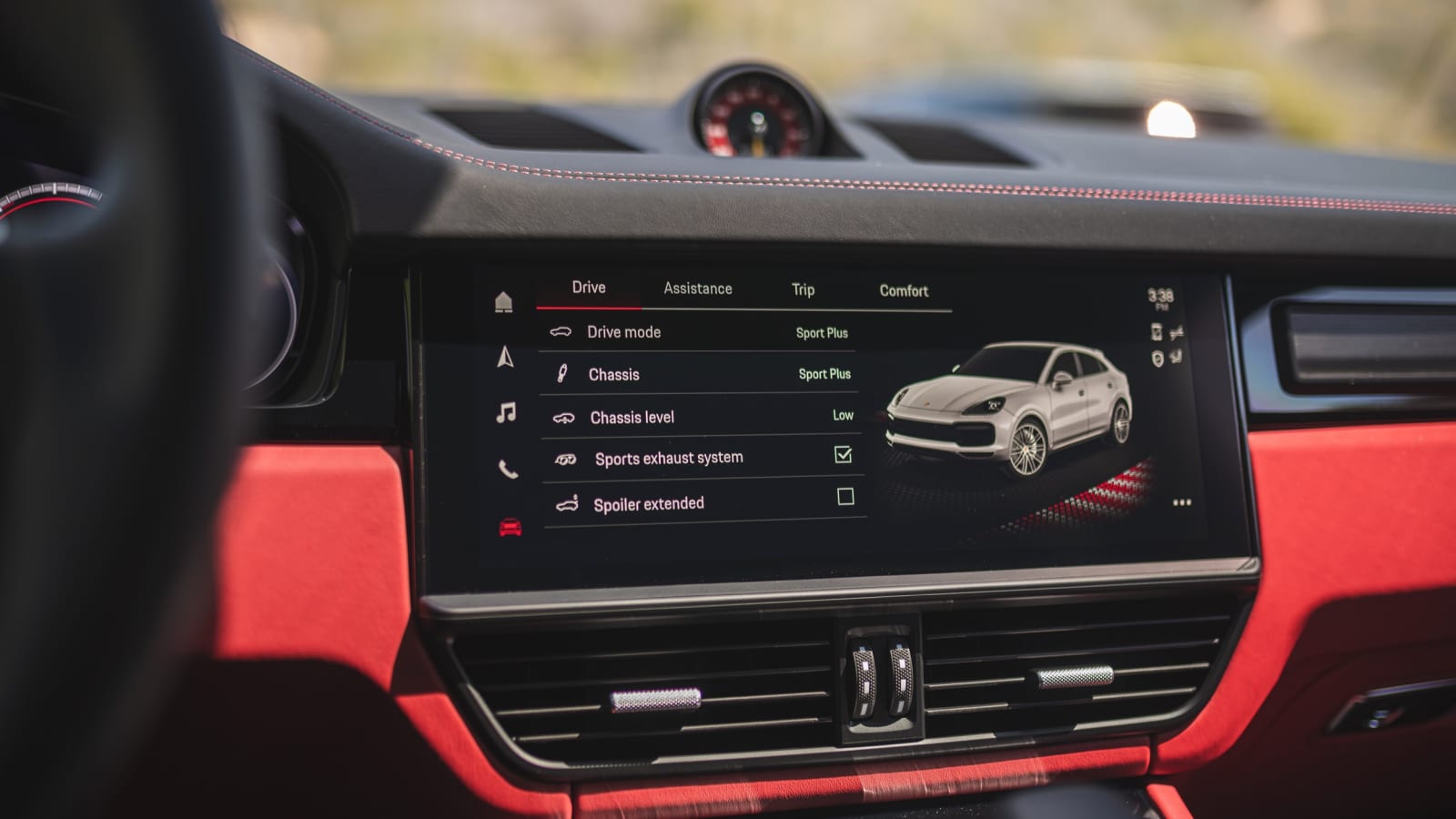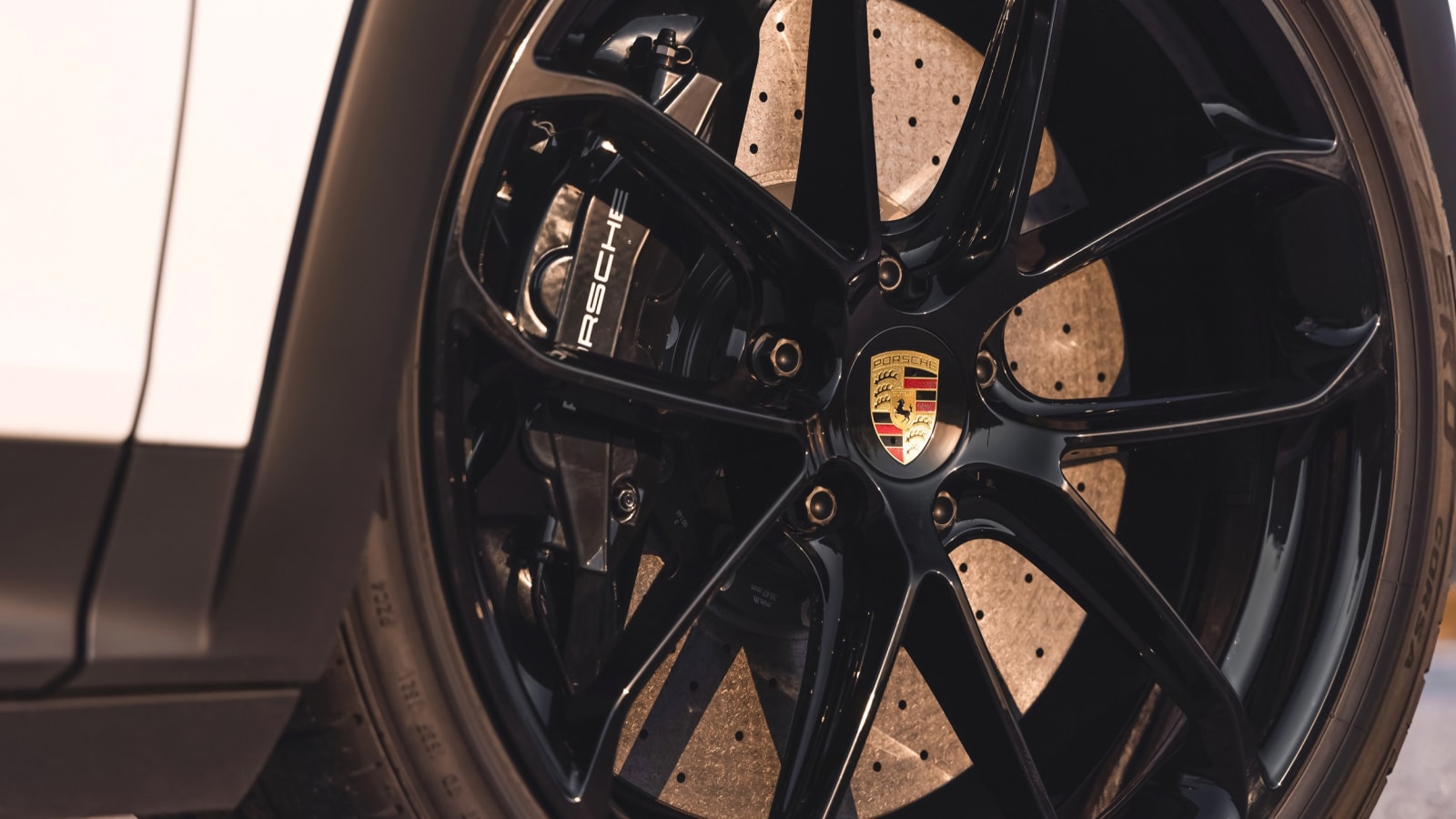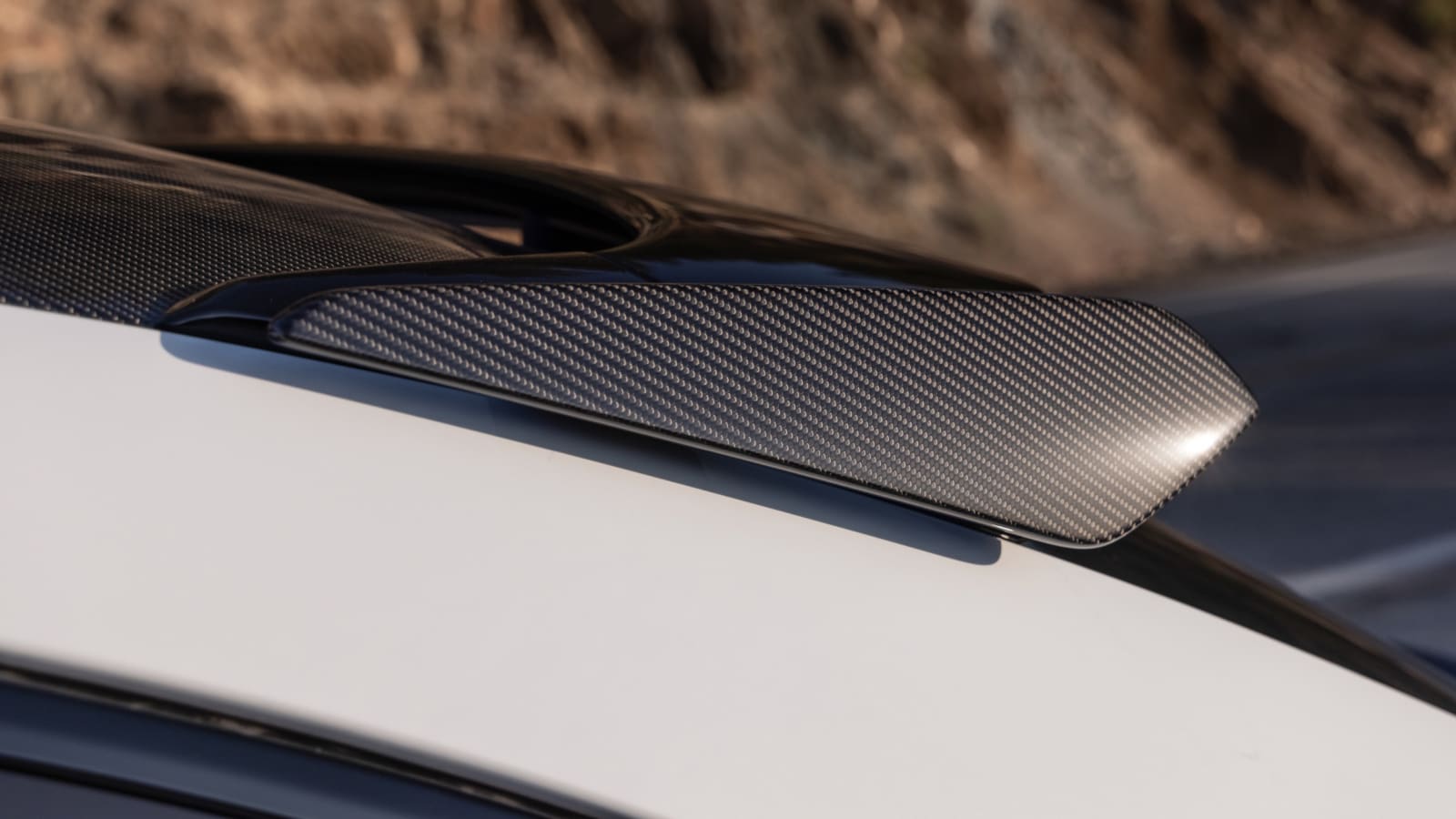LOS ANGELES — We can all agree that “Get In, Sit Down, Shut Up and Hang On” is a tired bumper sticker slogan. It’s laughably inappropriate on every beater it’s invariably attached to, but that phrase wouldn’t be out of place if it were emblazoned on the cover of the 2022 Porsche Cayenne Turbo GT owner’s manual.
The Turbo GT is, in a word, a beast. It’s the vehicle that recently set a new SUV lap record of 7:38.9 seconds at the Nürburgring before anyone knew what Porsche would name it. Porsche also says the Turbo GT can rocket from a standstill to 60 mph in 3.1 seconds, which is a tenth quicker than the Porsche 911 GT3, and only a tenth shy of the 911 GT3 RS. I’m sorry, what?
We admit that closed-course superlatives don’t have much real-world relevance beyond bragging rights, but they’re not kidding. The Cayenne Turbo GT demonstrated a breathtaking abundance of speed, poise, and sheer grip on a recent weekday blast along the length of Angeles Crest Highway. This mountain road is pretty much a Nürburgring loop cut open and laid out ”straight,” but over twice as long, with cliffs to the sides, and with donut skidmarks instead of rude slogans painted on the tarmac. Thing is, the Turbo GT was also a quite-livable daily driver around town on the imperfect roads closer to home.
Before we get too far, the 2022 Porsche Cayenne Turbo GT will only be available in the Cayenne’s coupe body style when it hits dealers early next year. This, they tell us, is precisely why the word “Coupe” does not appear in the name of the car. If they did have Coupe in the name, they’d get people asking for a Turbo GT in the squareback body style, and there isn’t one.
It would be an understatement to say that the Turbo GT is powered by an improved 4.0-liter twin-turbo V8 engine. At 631 horsepower and 626 pound-feet of torque, this engine is the most powerful V8 in Porsche’s lineup. They’ve done it by fitting new turbos with larger compressor wheels, by dropping the V8’s compression ratio from 10.1- to 9.7-to-1 and then cranking up the boost from 21 to 23 psi. There are revised intake and intercooler systems that can handle more air, and new injectors that can deliver additional fuel. Belowdecks, they’ve fitted a new crankshaft, rods, pistons and timing chain to bear up to the extra stress.
On paper, the changes amount to a whopping 90 hp and 59 lb-ft over the twin-turbo V8 that powers the Cayenne Turbo. Sure, the Turbo S E-hybrid is rated at a combined 670 horsepower and 663 lb-ft of torque, but that’s when the electrical side can participate with a fully-charged battery. On pure gasoline it’s working with the same 541 hp and 567 lb-ft V8 engine as the normal Cayenne Turbo. What’s more, the Turbo S E-Hybrid Coupe is a full 673 pounds heavier than the Turbo GT, and that extra bulk limits its best effort 0-to-60 mph acceleration to 3.6 seconds, not to mention its overall dynamics.
The end result is a significant punch you can really feel when you lay into the throttle, but it’s also very tractable, precise and ultimately responsive when you feather it through corners because of the effort put into keeping the turbos spooled up. Not in a hurry? Fine. It exhibits zero high-strung drivability traits in Normal mode. If you do happen to be dawdling and anticipate a sudden need for a burst of speed while on the move, the GT’s Sports Chrono dial has a red Sports Response button that functions like push-to-pass. Pressing it sets the transmission in the most favorable low gear for your current speed and optimizes all other systems. You have 20 seconds to act, after which it resumes your previous setting.
Big power and torque gains don’t mean much if you can’t put it to the ground or carve through corners, and here Porsche has given as much thought to the Turbo GT’s tires and suspension. The Turbo GT also rides on specially-developed 22-inch Pirelli P-Zero Corsa tires, which carry a treadwear rating of just 80. The GT’s tires share the 285-mm front and 315-mm rear tread width of the 21-inch Cayenne Turbo setup, but here the profiles are 5 points lower (285/35 and 315/30) owing to the larger wheels. And the wheels themselves are wider — 10.5 inches instead of 9.5 up front and 11.5 inches instead of 11 out back. Front negative camber has been increased by 0.45 degrees to make use of the extra stick.
Other changes include a 17mm drop in ride height compared to the Turbo — which equates to a 7mm drop relative to the GTS because that one is 10mm lower than the Turbo. They’ve also increased the effective spring rate of the three-chamber air suspension by some 15% and recalibrated the PASM adaptive damping to suit. In a less-obvious move, they’ve developed a Turbo GT-exclusive water cooling system for the housing that contains the all-wheel drive system’s multi-plate clutch, because that’s where the GT’s newfound power and torque runs headlong into its extra grip.
All of Porsche’s performance options are here, but in order to limit your exposure to Porsche acronym alphabet soup (PAAS) we’ll focus on the ones that aren’t standard on a Turbo Coupe. Most have been similarly recalibrated to account for the extra power and grip. Those would be rear axle steering (RAS), torque vectoring plus (PTV+), the dynamic chassis control (PDDC) system of active stabilizer bars, and truly massive carbon ceramic brake discs (PCCB) clamped by 10-piston front and four-piston rear calipers.
It all comes together when you hustle the Turbo GT into a corner. The brake action is immediate but fully controllable, and the steering arcs into bends precisely. The PDCC system nearly neutralizes the feeling of body roll as the grip from the Corsas builds and builds. Enter too hot and your line will tuck in neatly as you ease out. The Turbo GT seems to shrink around you, and it’s easy to lose track of the fact that you’re in an SUV. It was so good that we assumed it’d be intolerably stiff around town, but it just wasn’t. The standard rear wheel steering is definitely a plus in tight quarters, too.
Much of this feeling comes from the immense grip and power, but at 5,000 pounds the Turbo GT is also comparatively light. It’s not just 673 pounds lighter than the Turbo S E-hybrid, it’s also 24 pounds lighter than a Cayenne Turbo Coupe. That may not sound like much, but consider the extra standard parts: taller and wider wheels, larger intercoolers, the water-cooled AWD system, and all of those standard P-acronym chassis systems. There are also body changes such as a re-sculpted nose, more prominent wheel arch trim, standard endplates on the roof spoiler, and a taller Gurney Flap on the adaptive rear spoiler.
Some of the offsetting weight loss comes from the standard carbon-ceramic brakes, but another big chunk comes from standard (and Turbo GT exclusive) titanium exhaust piping, rear mufflers and exhaust tips. The upstream steel portion from the middle of the car forward is lighter, too, because the GT lacks crossover piping and center mufflers. Additional savings come much higher up, where the standard Lightweight Sport package brings in a carbon fiber roof and a carbon-fiber rear diffuser.
There are a few negatives, but if you ask us, many of them are positives if you want the Turbo GT because of what it can do. You can’t option it with a panoramic glass roof. Fine. Too much weight up high. You can’t option away the rear buckets. Good. See “hang on” in the above slogan. It can’t tow a trailer or even be fitted with a hitch for a bike rack. Meh. Don’t get any Cayenne Coupe if you want to do that.
Some of the negatives really are negatives — or at least worth considering before you pull your wallet out. The adaptive spoiler is quite tall when it’s up, and it’s always up when you’re cruising the freeway. With the roof spoiler also intruding from above, the view behind through the center mirror is awful. You probably don’t need maximum downforce at 75 mph, but we didn’t find an easy way to tone it down.
Porsche 911 GT2 customers might intuitively know the next one, but SUV buyers might get caught out. The P-Zero Corsas are incredible, but their 80 treadwear rating means you might replace them as often as you change the oil. And don’t even think about foul weather. Tirerack categorizes the Corsa as a “streetable track and competition” tire, and even suggests caution in standing water. They go on to say that “Pirelli’s warranty does not cover tires that develop compound cracking due to use in ambient temperatures below 45° Fahrenheit.” You may need a second set of wheels and some winter tires. Porsche says their accessory 21-inch winter setup for the Cayenne Turbo will fit over the massive PCCB brakes, so there’s that.
By now you probably won’t be shocked to hear the base price is $182,150, including destination. That includes quite a lot, and there really aren’t any performance options. Our test car had $26,700 in assorted other options that brought the price up to $208,850. Most of them amounted to trim and color upgrades, among them $1,500 to paint the wheels and calipers gloss black. The Burmeiseter stereo commanded $5,810, and a quartet of high-end safety options accounted for another $8,950.
If you can afford the 2022 Porsche Cayenne Turbo GT, you absolutely will not be disappointed. It is a legitimate apex slayer among SUVs, a vehicle that has been optimized from top to bottom to deliver stunning performance. Somehow, though, it also manages to be perfectly agreeable as a daily driver … if the road is reasonably dry and it doesn’t snow where you live.
Related video:

